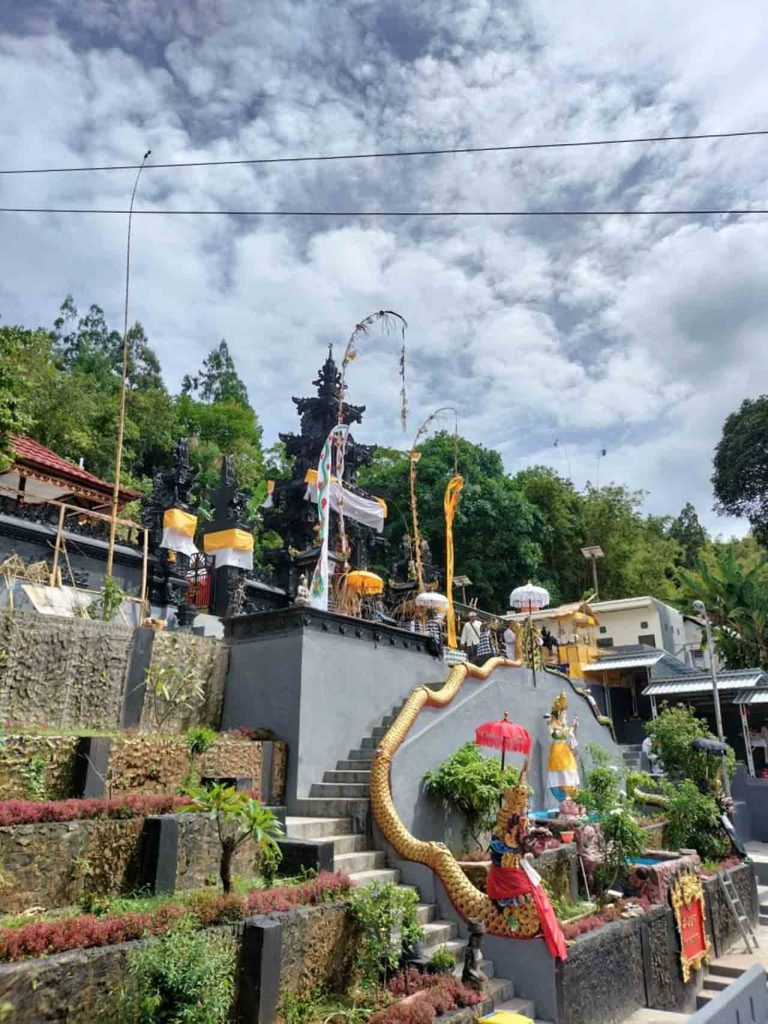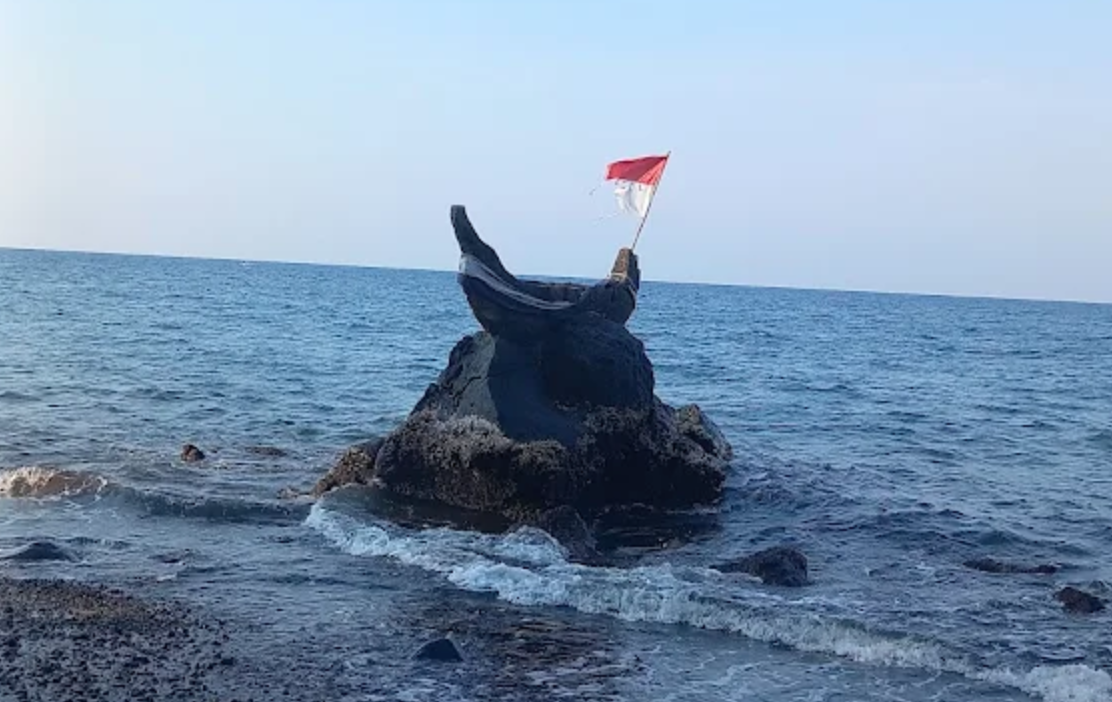Overlooking the blue waters of Ambon Bay, a sacred temple rises as the spiritual heart of Hindu life in Maluku: Pura Siwa Stana Giri. Nestled on Dr. Malioholo Street, in the Taman Makmur area of Nusaniwe District, Ambon City, this temple is more than a site of worship. It is a living symbol of resilience, cultural harmony, and religious tolerance in one of Indonesia’s most diverse provinces.
Pura Siwa Stana Giri was officially established in February 1991, born from the need of Hindu migrants—many from Bali and Java, who came as government officials, soldiers, or traders—to have a spiritual center in their new home. Its name, “Stana Giri,” literally means “palace on a hill,” fitting its location atop the scenic hillside near Siwalima Museum, offering panoramic views of Ambon Bay.
For decades, the temple stood as a beacon of Hindu traditions in Ambon. Yet, tragedy struck in November 2019, when a devastating earthquake shook the island. The impact left nearly 80 percent of the temple complex badly damaged, rendering it unsafe for worship.
Reconstruction efforts began in 2021 with strong support from the Maluku provincial government, Parisada Hindu Dharma Indonesia (PHDI), and solidarity from Hindu communities across the archipelago.
On February 5, 2023, the renovated temple was ceremoniously inaugurated by Maluku Governor Murad Ismail. The rituals were led by Pandita Siwa Ida Rsi Bhagawan Darma Cadhu Siddhi from Nusa Penida, Bali, through the sacred Karya Agung Mamungkah Ngenteg Linggih ceremony. This moment signified not only the physical restoration of the temple but also the spiritual revival of Hindu resilience in Maluku.
Today, Pura Siwa Stana Giri serves as the Kayangan Tiga temple for Hindus in Ambon. It hosts major ceremonies such as Nyepi, Galungan, Kuningan, Saraswati, Pagerwesi, and other monthly rituals.
Beyond its religious role, the temple is envisioned as a hub for youth development, cultural preservation, and interfaith harmony. Its ceremonial events often include participation from Christian and Muslim leaders, highlighting Ambon’s long-standing tradition of religious tolerance.
Perched on a hillside, the temple also faces ecological challenges. Geological studies have indicated low-resistivity soil zones in the area, raising concerns over potential landslides during heavy rains. Continuous collaboration between the government and the Hindu community is vital to safeguard the temple’s structure for future generations.
According to the Maluku Ministry of Religious Affairs, the Hindu population in the province is approximately 15,696 people, with the majority residing in Ambon and Central Maluku. Pura Siwa Stana Giri stands as the central sanctuary for these communities, ensuring that rituals and traditions remain alive and vibrant.
The rebirth of Pura Siwa Stana Giri is not merely about rebuilding walls and shrines—it represents the enduring identity of Hindus in Maluku. For the community, the temple is a reminder that faith transcends challenges, even in times of disaster. Its presence also enriches Ambon’s cultural mosaic, where diversity is celebrated as a source of strength.
Standing proudly on its hilltop, the temple offers not only a breathtaking view of Ambon Bay but also a sense of peace and devotion for those who come to pray. More than a place of worship, Pura Siwa Stana Giri is a testimony of faith, resilience, and harmony in the eastern part of Indonesia. (BT)





